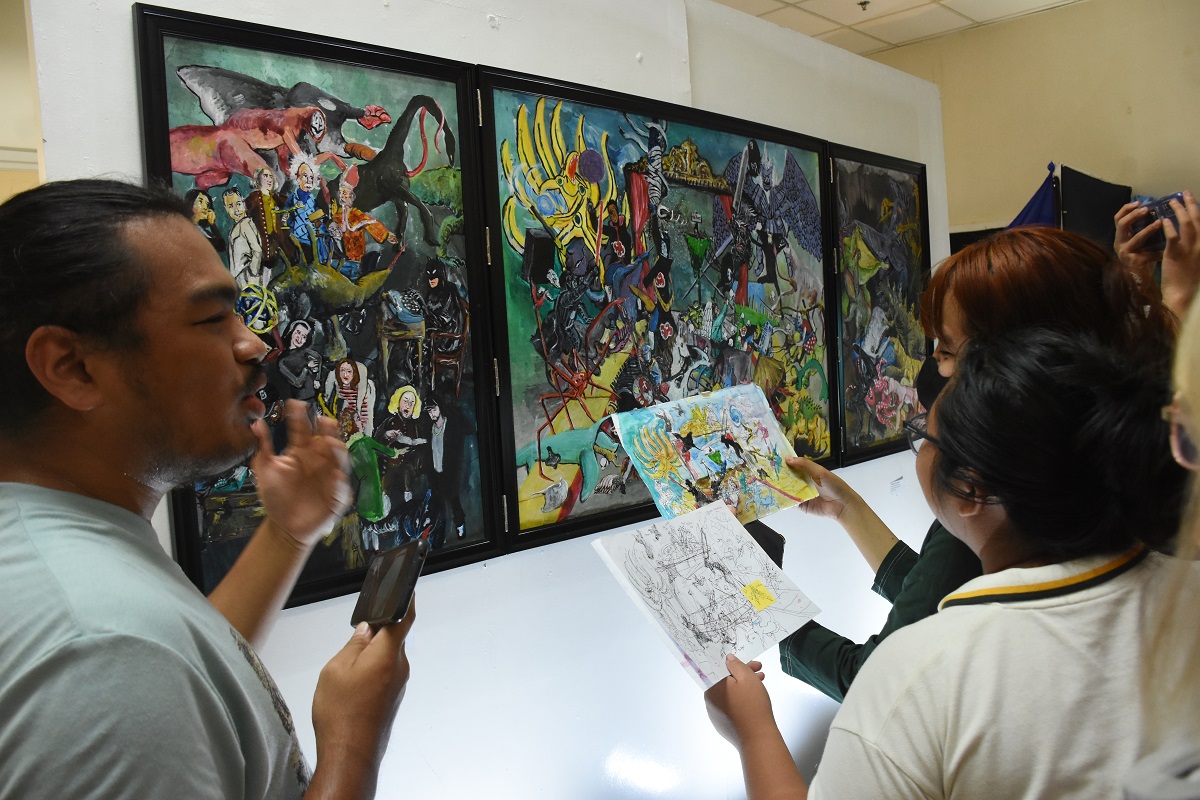
Originally established in 1968, the Bachelor of Fine Arts (BFA) offers two major specializations, namely Visual Communication and Studio Arts. BFA major in Studio Arts is a four-year program that aims to produce graduates with comprehensive knowledge, appropriate skills and a professional attitude in the practice of studio arts and visual communication, within the framework of the university’s educational philosophy and core values. The program aims to produce graduates with critical and creative thinking, visual and digital literacy, technical and technological competence and professional ethics in the practice of studio arts, equipped with skills and competencies responsive to professional, industry and global requirements and standards. The program has produced 39 cohorts since its establishment.
The BFA major in Studio Arts program provides a holistic education that will ground students in the fundamentals of aesthetic knowledge, tools and techniques in translating concepts into artworks and visual art products through innovations and adoption and use of traditional and non-traditional media and devices for communication materials for intended audiences. The program includes study of the different studio arts especially painting, sculpture, printmaking, computer art, art reproduction, and installation art through courses in visual perception, techniques, materials, anatomy and figure drawing, art theory, art history, visual studies, digital art, art workshops, photography, art restoration, creative research, and art management.
The four-year program is ladder-type with students being granted the following: Certificate in Studio Arts after the third year level, and Diploma in Bachelor of Fine Arts major in Studio Arts after successful completion of all prescribed courses and university requirements after the fourth year. Under the revised 2018 curriculum, students must complete 175 units of coursework to complete this program.
BFA graduates belong to Level VI (Baccalaureate) of the Philippine Qualifications Framework (under qualification code number 60213) and are also recognized under the ASEAN Qualifications Reference Framework. The FEU Bachelor in Fine Arts program has achieved Level II formal accreditation status under the Philippine Association of Colleges and Universities Commission on Accreditation (PACUCOA).
The program welcomes all interested students from any senior high school track provided they reach the required minimum score in the FEU College Admission Test (FEUCAT). Applicants must also pass a skills and assessment test to qualify. The program accepts transferees only during the first semester of each academic year.
All incoming first year students must adhere to the University’s admission requirements as prescribed by the Admission and Financial Assistance Office.
Click or tap on the following sections for more information about this program.